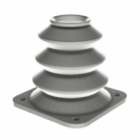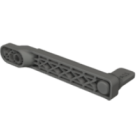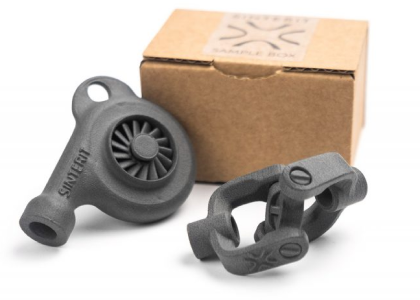3D print recycling
As additive manufacturing scales up, so does the conversation around sustainability — and one of the most important parts of that discussion is recycling. Can you recycle 3D printed waste? Are 3D printed parts themselves recyclable? These questions are becoming more urgent as designers and manufacturers seek not only functional output, but environmentally responsible processes.
Understanding 3D print waste
Every 3D print job produces some level of waste — whether it’s failed prints, support structures, brim/skirt remnants, or leftover powder and resin. In industrial settings, this waste can add up quickly, particularly in technologies like SLS and DMLS where unused material can’t always be reused at 100% efficiency.
In FDM printing, the most visible waste comes from rafts, supports, and failed prints. For resin printers, it’s leftover resin and cleaning solvents. And for powder-based methods, it’s aged or discolored powder that can’t meet part-quality standards anymore. This is where 3D print waste recycling becomes essential.
Are 3D printed items recyclable?
The answer depends on the material used and the available recycling infrastructure. Thermoplastics like PLA and PETG are technically recyclable — but not always accepted by municipal recycling systems due to their additive contents or non-standard forms (e.g. spooled filament, small parts). In-house recycling is possible, but often requires additional equipment to grind, filter, and extrude filament back into usable form.
Photopolymers (used in SLA/DLP) and sintered powders (used in SLS) are much harder to recycle in a traditional sense. These materials often undergo chemical or thermal transformation during printing, making them incompatible with standard recycling methods. However, partial powder reuse is already common practice in SLS and MJF systems, where used powder is mixed with fresh material.
Recycling 3D print waste: methods and tools
To address growing concern over waste, various approaches have emerged:
- filament recyclers and extruders allow users to shred failed PLA/ABS prints and turn them into new spools,
- closed-loop systems in powder printing let operators reuse a high percentage of leftover powder — sometimes up to 80% — depending on the material and application,
- partnering with recycling services that specialize in engineering polymers is increasingly viable for high-volume operations,
- design optimization (e.g. reducing supports or hollowing parts) helps minimize waste upstream.
While recycling workflows still require effort, they’re improving — and in some cases, they can reduce material costs over time.
3D printer material recycling: a growing segment
The demand for recyclable 3D printer materials is rising. Manufacturers are now developing filaments and powders from recycled feedstock, such as:
- rPLA and rPETG filaments made from post-consumer plastic waste,
- PA11 derived from castor oil, which is renewable and recyclable,
- biodegradable composite filaments, combining sustainability with mechanical performance.
There’s also growing interest in multi-use materials — powders and filaments that tolerate several reuse cycles without degrading part quality, especially for prototyping and educational environments.
Making recycling part of your 3D workflow
While 3D printing can’t eliminate waste entirely, it enables tighter control over material flow than most traditional manufacturing. By incorporating recycling into your workflow — whether through hardware, smart design, or responsible material selection — you can drastically reduce your environmental footprint without sacrificing performance.
Sustainability in additive manufacturing starts with small, tangible actions. Recycling 3D print waste isn’t just about being eco-friendly — it’s about building smarter, cleaner systems for the future.
Explore also
- Is 3D printing sustainable?
- 3D printing waste
- Is 3D printing bad for the environment?
- Sustainable 3D printing materials
- 3D printing environmental impact
Related categories
 Austria
Austria  Bosnia and Herzegovina
Bosnia and Herzegovina  Bulgaria
Bulgaria  Croatia
Croatia  Czech Republic
Czech Republic  Denmark
Denmark  Estonia
Estonia  Finland
Finland  France
France  Germany
Germany  Greece
Greece  Hungary
Hungary  Ireland
Ireland  Italy
Italy  Latvia
Latvia  Lithuania
Lithuania  Poland
Poland  Portugal
Portugal  Romania
Romania  Slovakia
Slovakia  Slovenia
Slovenia  Spain
Spain  Sweden
Sweden  Switzerland
Switzerland  United Kingdom
United Kingdom  Ukraine
Ukraine  China
China  Hong Kong
Hong Kong  India
India  Israel
Israel  Japan
Japan  Malaysia
Malaysia  Philippines
Philippines  Saudi Arabia
Saudi Arabia  South Korea
South Korea  Taiwan
Taiwan  Thailand
Thailand  Turkey
Turkey  United Arab Emirates
United Arab Emirates  Egypt
Egypt  South Africa
South Africa  Tunisia
Tunisia  Canada
Canada  Mexico
Mexico  United States
United States  Brasil
Brasil  Colombia
Colombia  Australia
Australia  New Zealand
New Zealand 












